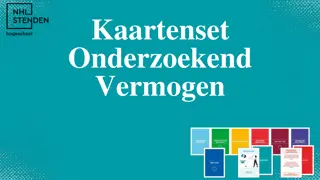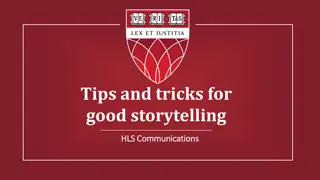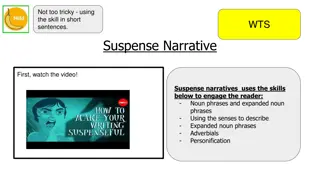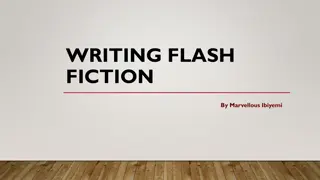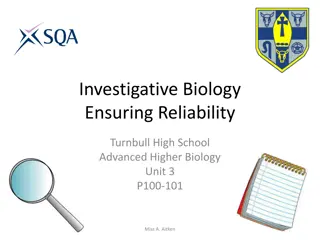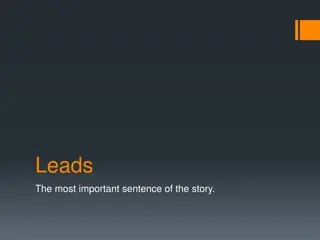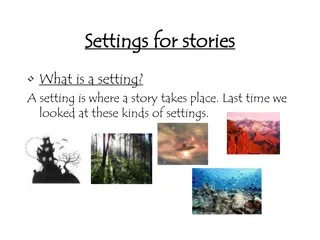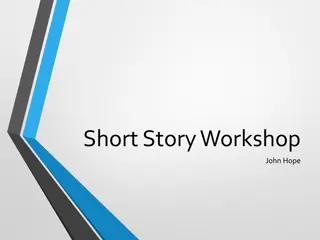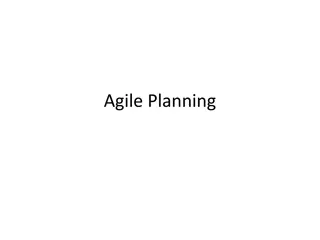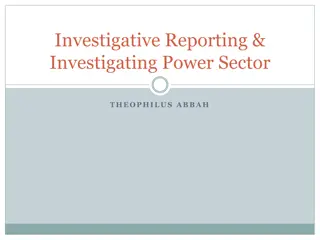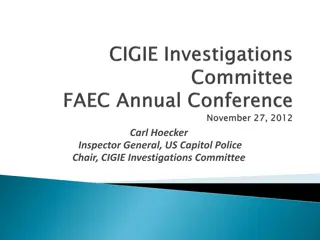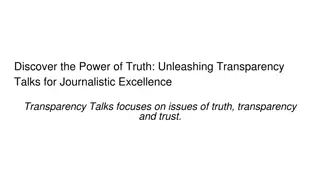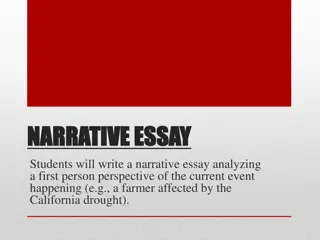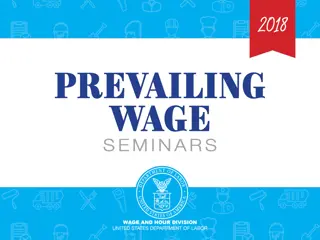Crafting Compelling Investigative Stories: Techniques & Examples
Uncover the art of investigative storytelling through structured sessions at the workshop by @Daily Trust Foundation, supported by MacArthur Foundation. Delve into the investigative process, narrative styles, and impactful presentations with practical examples and expert insights. Learn to engage readers by building suspense, highlighting crucial details, and delivering powerful conclusions. Explore the significance of investigative journalism in today's context and discover effective storytelling strategies for impactful reporting.
Download Presentation

Please find below an Image/Link to download the presentation.
The content on the website is provided AS IS for your information and personal use only. It may not be sold, licensed, or shared on other websites without obtaining consent from the author.If you encounter any issues during the download, it is possible that the publisher has removed the file from their server.
You are allowed to download the files provided on this website for personal or commercial use, subject to the condition that they are used lawfully. All files are the property of their respective owners.
The content on the website is provided AS IS for your information and personal use only. It may not be sold, licensed, or shared on other websites without obtaining consent from the author.
E N D
Presentation Transcript
A EDITING THE INVESTIGATIVE STORY WORKSHOP ORGANISED BY @ DAILY TRUST FOUNDATION SUPPORTED BY MACARTHUR FOUNDATION Chida Hotel Utako District Abuja
STRUCTURE OF THE INVESTIGATIVE STORY BY THEOPHILUS ABBAH, MANAGING EDITOR, DAILY TRUST
Introduction: A sea of materials Interviews Infographs Data Personal Experience Experts Documents Explainers
How do I make the story interesting? Process: This has to do with a lot of analysis: illustrations, directives, details step by step, the writer addresses the reader. It is basically expository Chronologically Narratives Following a situation through a period of time; following the actual investigation as it unfolds The story unfolds through time, sequence and actions, until it comes to a logical conclusion Ingredients: Start from the most crucial action point; includes dialogue, powerful descriptions, bringing out contradictions, explainers, and ending memorably. Example:Emmanuel Maya s story on the deadly journey migrants embark upon from Nigeria to Libya
Examples: Chronological: http://sunnewsonline.com/illegal-desert- journey-to-europe-how-nigerian-drowned-in- mediterranean-sea/ Narrative: http://www.dailymail.co.uk/news/article- 5187241/Criminals-poisoned-anti-fracking-camp- protest.html. Process: https://www.dailytrust.com.ng/news/feature/- local-rice-the-bitter-sweet-side-of-an-economy-driven-by- women/191284.html
Order of Presentation Wall Street Journal High Fives by Carol Rich News (What has happened or is happening?) Context (What is the background?) Scope (Is this an incident, a local trend, a national issue?) Edge (Where is it leading?) Impact (Why should your readers care?): http://www.dailymail.co.uk/new s/article-5187241/Criminals- poisoned-anti-fracking-camp- protest.html. Start with a person or situation to set the scene between the case and the issues Broadening out from that individual to deal with the bigger issues, through a nut graph that explains the link between the individual and the larger issue Returning to your case study for a human, striking conclusion Examples: https://www.dailytrust.com.ng/sunday/i ndex.php/news/17543-inside-the- massive-fraud-in-kogi-councils. http://www.investigativecollective.com/ nigeria-how-oil-elite-abandoned-the- farming-lands/.
The Pyramid style Start with a summary of the story s theme Foreshadow some of what you will discover Walk step by step through your investigation, keeping the suspense alive and building the story to the dramatic/shocking end Save the most important, dramatic information for last. https://newsdiaryonline.com/subsidy-probe-latest-monarchs-govt-officials-move-to-kill-report-reps-sunday-trust/ Read: https://newsdiaryonline.com/subsidy-probe-latest- monarchs-govt-officials-move-to-kill-report-reps-sunday- trust/ https://newsdiaryonline.com/subsidy-probe-latest-monarchs-govt-officials-move-to-kill-report-reps-sunday-trust/ https://newsdiaryonline.com/subsidy-probe-latest-monarchs-govt-officials-move-to-kill-report-reps-sunday-trust/
Think Visually While doing the story, we must think of images and illustrations that should go into explaining the it Maps Graphs Charts Images/illustration Photographs
Advantages The map and images above illustrate this story: https://www.dailytrust.com.ng/boko-haram-kills-1-100-since-being- technically-defeated.html i. It helps with pitching your story because it gives advance warning of any maps, charts, graphs or images that might be needed ii. It assists teamwork by aiding layout people and those who place stories on pages iii. It especially helps your temwork with photographic colleagues, laying the basis for conversations about what the best images for the piece would be and where you can draw on their expertise iv. It puts images in your head which you can then paint with words, such as for example, a scene-setter introduction. v. It helps you communicate better with readers, who often learn far more from a well-chosen image or a striking chart than from text alone. An image, says the proverb is worth a thousand words.
How to ensure accuracy Definition & Examples Unproven Generalizations Supporting Arguments Define jargons, complex or technical terms. Abstract concepts should be explained with concrete examples What do you mean by many , most , some , few , several , all , always , the reason , often ? You must be very specific. N21.5 million was stolen , not millions was stolen . Support all statements with concrete details. Bring out facts that back every allegation and arguments. An investigation MUST produce evidence, else the writer and editor will expose themselves to legal challenges
Accuracy (Contd) Quoting Authorities as Proof Beware of Prejudices, Stereotypes or Emotions Establish Contexts You must ensure that the report brings out the direct quotes that are crucial to your discovery. You must also bring the pros and cons, the explanations that is given for the fraud. Make sure you have multiple sources that are relevant to the story, not just one. Support the quotes with background information which you have researched into. Keep your language neutral and treat all sources with respect. Provide evidence for what you say. Don t say All Fulani herders are killers or All Igbo traders import fake products . If an Igbo man imported fake products, name him. Focus on weight of evidence, solid proofs, not a single, clinching evidence Everything happen in context. The job of an investigative journalist is to establish and explain the context in which a criminal or fraudulent act was committed. Why do many Nigerian youths risk their lives on the deadly journey to Europe? Unemployment. Why not tell your reader the frustration that Osasuwa passed through in Nigeria before he decided to take the risk to travel to Libya or Italy?
Link and Conclusion Tie up loose ends: Explain what happened to the victims of the fraud? Tell us if he is alive or dead or suffering or triumphant at the end of your story Summarize the theme once more to remind us why we are interested in the story Create a kicker (a sting in the tail that makes people think) Emphasise context: Put the issues back into its setting and remind readers of hopes, constraints and linked developments Go back to the people we met at the beginning, and let them have the last word. Don t say only time will tell . An investigator must find out something concrete, a definite resolution. You discourage your reader if you are waiting for time to tell the him the facts.
Revise your work Spell-check names. Don t trust the computer so much What did the story discover, expose, or explain? Does the story say anything new, for which a reader can pay? Did you provide evidence for all the claims? Revision is part of the writing process Who said what? Was it the president or the minister of finance, or commissioner of environment? Do the facts support the headline? Is the amount in Millions or Billions? Is it in Naira or Dollar or British Pounds or Euro? Check the quotes. Are they correct?
Conclusion Do the work of a Reporter, not an Opinion Writer. Congrats!



